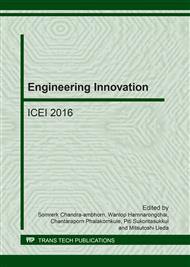p.353
p.359
p.367
p.373
p.379
p.384
p.390
p.396
p.402
Resistance to Underwater Abrasion of Fiber Reinforced Cement Mortar
Abstract:
Surfaces of hydraulic concrete conduits where significant abrasion of waterborne sediment can occur often degrade and need a regular repair to maintain their serviceability. In this research, thin overlay made of fiber reinforced cement mortar was introduced as a repair measures. Its resistance to underwater abrasion was therefore experimentally evaluated following the procedures of ASTM C 1138. This research utilized three types of fiber: steel fiber, polypropylene fiber, and micro polypropylene fiber (the micro polypropylene fiber was used only in a combination with either the steel or the polypropylene fiber). The influence of these fibers on the abrasion resistance of fiber reinforced cement mortar was then determined in terms of weight loss. The weight loss results showed that the fibers added to mortar specimens can enhance the abrasion resistance. Between the steel and polypropylene fiber, the latter provided better abrasion resistance. In case of the combination mixes, the micro polypropylene fiber increased abrasion resistance when combined with the polypropylene fiber but had no benefit when combined with the steel fiber.
Info:
Periodical:
Pages:
379-383
Citation:
Online since:
January 2017
Price:
Сopyright:
© 2017 Trans Tech Publications Ltd. All Rights Reserved
Share:
Citation:


